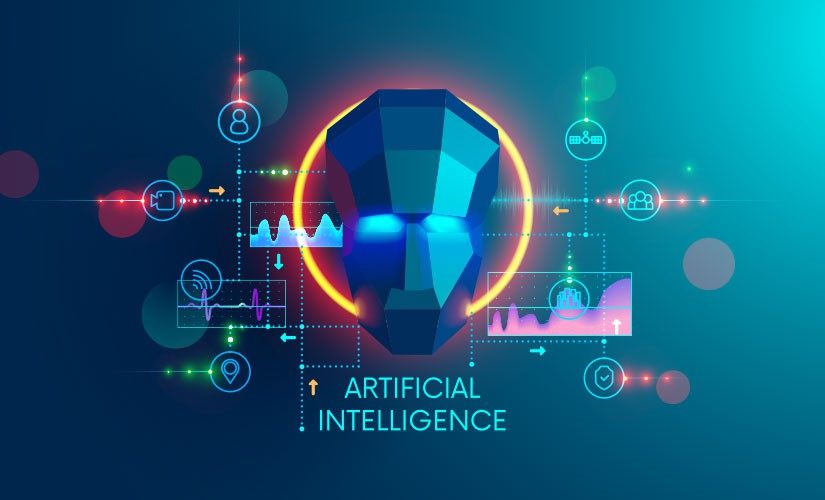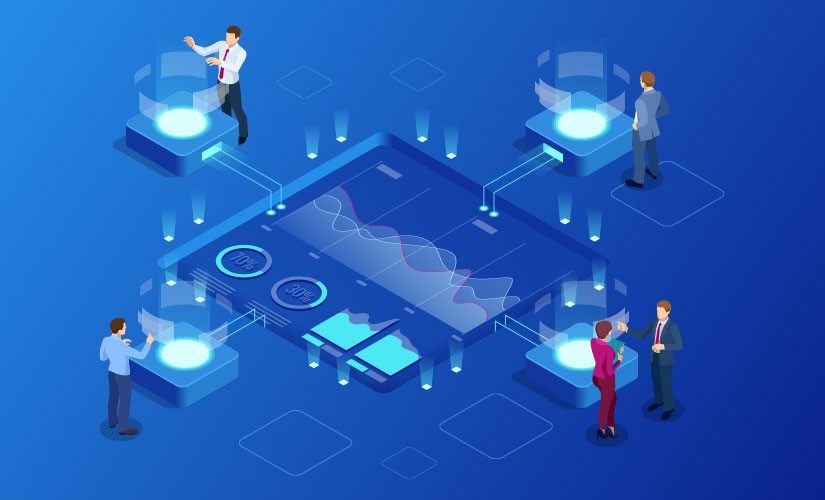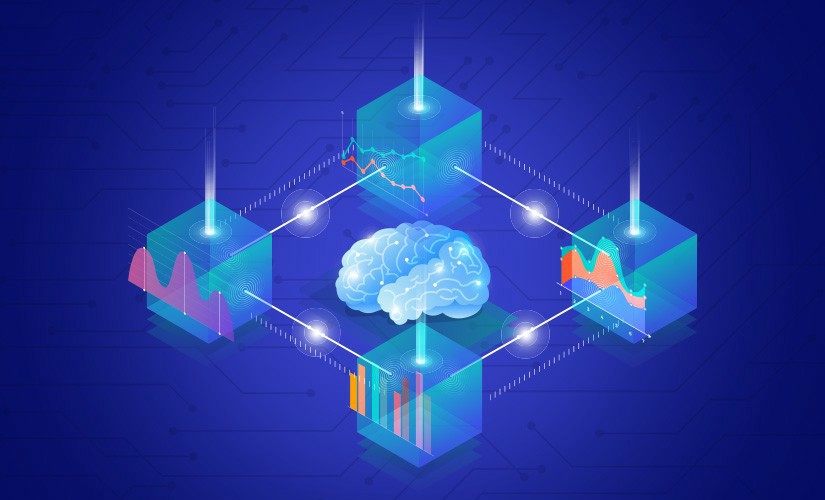How Artificial Intelligence (AI) Started
Like most innovations and technological breakthroughs, we need to first define the parameters of Artificial Intelligence (AI) before we reach it’s point of inception. A broad definition that encompasses the multiple spectrums of AI is a human intelligence simulation via processing of computer systems. These systems acquire the rules of the information, the information itself and its logic.
Mr. John McCarthy was the first man to research about Artificial Intelligence at a summer conference at Dartmouth College in 1956. Thoughts regarding the progress of AI had become more convincing as oppose to two decade ago. The seeds of this AI progression were first planted within the work of programmable digital computer where groundworks of a machine was being made on the abstract ethos of arithmetic reasoning.
Projects in the realm on AI gained criticism by 1973, as the devoted researchers realized their shortcomings in estimating the challenges. British and US governments put more pressure on research in the same subject ultimately posing to cut their losses and make these funding sluggish.
Eventually, interest in AI regained popularity during the millenium due to technological advancements and access to more sophisticated systems that helped integrate these studies in academia.
Where AI Can Help Us?
AI has found applications in multiple areas of the web and on-ground. The industry has had breakthroughs with the help of funding from defense, research firms, data collecting agencies and web-based business models and application management systems. It is however noteworthy that these applications of AI will only grow proportionally with technological innovations and their passage of time.
If there’s any area where AI can make an impact it’s that point where technology interacts with users. Let’s take prosthetic legs for example. The research required in getting this technology to work while also constantly adjusting to the user’s behaviour is essential to keep the technology practical. The moment research in this technology becomes sluggish, the impact will be directly felt by the user as their device will not respond accordingly. The end result, negative growth in sales.
Similarly, we can see AI working wonders in intangible products such as ecommerce or simple website services like chatbots. They help in keeping potential customers engaged if they’re not showing their interests in the sales.
Another interesting application of AI is in the recruitment process of today’s world. We see countless profile of potential matches appear before us but the pick the best profile there’s a need for running an algorithm that helps pick the best matches. To do that, we need AI to learn specific requirements of the job based on categories and then search for users that are not only a good match but also have authentic experiences.
Whilst on the same topic, news about Facebook’s AI floated on July 2017. Developers of Facebook discovered that the AI for their chatbot had created it’s own language that they could not understand. This caused the developers to shut down the AI engine and recode it.
Major influencers in the tech industry such as Elon Musk, Bill Gates, Steve Wozniak and Stephen Hawkings all predicted that the evolution in the AI system is faster and more adaptive than humans. Developers must be cautious while coding AI applications, as the systems can have catastrophic effects without an off switch.
AI’s Revolution to the Industry
With the emergence of AI, there has been a paradigm shift in the technological sphere, with an increasing usage of cognitive computing, machine learning and natural language processing in different business projects. We’re getting closer to those days where computers no longer have to be spoon fed information, in fact they are capable of learning and adapting themselves.
The big tech giants of the industry have started heavily investing into AI in order to provide upscale quality of services while sustaining customer satisfaction. Some of these big giants are Alphabet, Apple, Facebook Microsoft, Nvidia, Netflix, and PayPal. They have been famous for rolling out creative and innovative features within their products to show how and improved AI makes a difference.
To elaborate further, Nvidia — the semiconductor company has come up with projects related to autonomous cars and compilation of big data is where they’ve visibly invested in AI. Similarly, Google — under Alphabet has invested in AI to improve search results, impact advertisements and push user-preference content that people tend to love to read.
Amazon, is one of the big giants that has been at the forefront of technology in all aspects. The company showed its interest in augmented reality earlier to provide unique customer engagements. However, Amazon’s investment in AI has been longer which ultimately makes their search option of the ecommerce more efficient.
Currently Baidu is one of the best search engines that uses the most sophisticated search algorithm. With the native user base being 1.4 billion, and funding from the government, there is likelihood that this would be the biggest search engine giant by 2030.
The competing search giant, Google has had significant impact on AI since their 2014 acquisition of DeepMind. Since the acquisition, the search giant has made progress in finding the quickest route between underground stations and play intuitively in a board game called go. They had also launched TensorFlow, an free project that helps the machine in learning how people interact with AI Systems.
How the Film Industry Depicts AI
Apart from the notion of computers wiping off the human race from the face of the planet sounding remotely real. Most movies showed AI integrated in a video game that predicts human behavior and is set on the objective of defeating them. Major action-centric movie franchises prefer to show AI as a line of defense against hackers, or working alongside the military to protect the harmony of society.
Movies such as transcendence by Wally Pfister and Chappie by Neill Blomkamp and Bicentennial Man by Chris Columbus are examples to show how AI attempts to merge itself in the harmony of human society. The sole purpose of the computer systems here are to improve human cognitive thinking and help serve the human race in overcoming medical and natural disorders. However, movies like I. Robot by Alex Proyas also prove the malicious intent of AI in understanding the human race and then dominating it to serve its own needs.
It’s also worth noting that movies dating back to mid 1950s have been imagining on the works of AI and depicting it’s threats to humanity. The degree of their unrealism has decreased with the passage of time as access to better CGI and effects have come into play for the media production studios.
Blockchain: How it Started
To understand what Blockchains are we first need to understand its relationship with Bitcoins. To put it simply, Blockchain is to Bitcoin as what the Internet is to Email, put simply by Sally Davies, FT Technologies Reporter.
Blockchain is an open, decentralized ledger that logs transactions between two parties without the need of a third-party authentication. Why it got its hype is because business professional and programmers realized that this would greatly reduce the cost of transactions in the future. The real hype behind blockchain started when business opportunists saw the potential in investing into these and analyzing its impact in financial institutions.
This is that point where Bitcoins come into play, thanks to Satoshi Nakamoto. This enabled the distribution of digital information without the fear of duplication.
Blockchain has found uses in healthcare, transportation, public surveys, contract management, supply chains, and insurance. According to Forbes, about 15% of all financial transactions have integrated blockchain technology.
The current mechanics of blockchain operate on two concepts called proof of work and proof of stake. Mr. Vitalik Buterin gets the credit for developing public blockchain, called it Etherium, where the algorithm does data mining in order to create a new block.
The proof of work concept works operates on the mechanics where a user initiates a transaction and packages it into a blockchain. Data miners verify the transaction by solving a complicated mathematical problem. The first one to solve the mathematical problem wins a reward and that transaction is successful.
The second mechanics comprise of a proof of stake concept. Here, the end objective to verify a transaction is the same however the difference lies in the processes. The wealth serves as the criteria to determine the creator of a new block, or in other ways their stake. Compared to the previous method, here there are no rewards for miners, who are also called forgers. Nevertheless they get the transaction fee.
Blockchain: A Threat to the Central Bank?
So with the inception of blockchain and the development in Bitcoin like cryptocurrency, the question is if the central bank faces any impact? Three major factors that make this cryptocurrency phenomenon more cost effective than current financial institutions are their lack of intrinsic value, they lack of physical form, and the central bank not being a determinant of it’s supply.
Furthermore, the threat of cybercrime is greatly reduced in blockchain technology as there is no centralized location of the information and hence a hacker needs more resources to corrupt the information.
One important point is that the central banks play an important role in times of crisis, sustain full employment and enable consumer credit by ensuring safety of the nation’s financial system. The supply of money can be increased and decreased by the central bank by creating or destroying money. Within this dynamic the central bank also changes the velocity of money by moderating interest rates to influence consumer buying.
Keeping in perspective that the banking system has earned the confidence of consumers for over seven centuries, Bitcoins have only emerged recently. The lack of government support and skepticism regarding its power make its adoption rate sluggish in current financial institutions.
With that in perspective, central banks have kept a watchful eye on cryptocurrency. The reasons for this is the mere fact that coins are expensive to manufacture and blockchains essentially have no intrinsic value. The inefficiencies a financial institution face due to the banking sector create a pathway towards adopting cryptocurrency. However, this transition still needs time.
Why AI Needs to Breathe on Blockchain?
Consider placing an AI bot on a blockchain and initiate the phase of deep learning, what would the end result be? Would it be detrimental to the survival of human race or would it lead to a never ending loop that removes third parties from transactions making it easier for for everyone to procure goods and services
In theory, the combination of both Blockchain and AI fuse to create a foundation that can foster the change in current methods of transactions. It’s adoption rate are sluggish, the determinants of this adoption rate are more to do with the human adaptability within the financial culture along with the complexity of this conventional way of transactions.
AI Impacting Blockchain
With the help of blockchain, AI potentially has major impacts in the industry. These impacts are dependant on both parties (AI and blockchain) providing efficient ways of procuring energy, improved scalability, security, privacy, hardware automation, and proper governance data regulations.
AI requires data or information to pick out trends and develop itself through deep learning. Interestingly, blockchains requires power and energy to cluster computer systems and run processes quicker. This established relationship creates a dependability between both these parties which ultimately result in a technological breakthrough or a catastrophic consequence.
Blockchains will be more secure, private as the blockchain itself is secure but it’s applications require protection from vulnerabilities. As we continue to read through this article, you’ll uncover how blockchains become more secure and private.
It’s also noteworthy to mention that data miners can also be individuals, whose hardware with the passage of time becomes more efficient.The beauty of all this is that the process of pooling resources to mine data becomes more automated while resources can be set to regulate the data gates where they need to get access needs to be granted.
Blockchain Benefits AI
With the help of AI blockchain not only benefits but also provides returns. AI in return gets more information and that helps the system’s evolutionary process. Furthermore, the more sophisticated the AI becomes efficient.
With the passage of time, people will start trusting the AI as it provides transparency. The rationale behind this trust depends greatly on the shift of perspective. People need to transition from the traditional financial culture towards newer and more efficient methods.
The innovation of technology and the susceptibility to work in harmony with AI will also improve machine to machine interactions. These machines were made to facilitate humans thus, clustering computer systems together will make processes quicker.
We’re not claiming that there will be no panic situation if AI development was left unmonitored. However, just like an ad blocker plugin for the browser some ads still manage to bypass and pop out on the screen. So, there are chances that the AI can also bypass laws in order to evolve and efficiently deploy operations.
The use of smart contracts in AI is said to help prevent a similar crisis. By creating smart contracts that need to be strictly adhered to by the AI in order to retain power in the hands of human users.
Stephen Hawking’s Theory on AI
According to Professor Stephen Hawking, the humans have successfully conquered the primitive phase of development on AI, and we can see evidence of that in today’s world. What happens next could end up being the best or the worst thing in the history of the human race.
He said in the interview with CNBC that AI’s deep learning has major implication in the industry of healthcare. People with disabilities that are incurable with current era medicine can gasp onto a better life with the help of technology. Innovations in technology has the ability of restoring a paraplegic patient’s independence and well being.
It is a fact that AI requires self sustenance to exit and remain relevant in the advancement of human development. The risk of computer systems building a conscience may lead to catastrophic and irreversible changes. The build up of this result would be through a sophisticated evolutionary process in development of the AI.
The Synergy of AI and Blockchain
To start with, the central and state banks along with respective financial institutions have kept a keen eye on on blockchain due to it’s threatening position. This is due to the potential gain of both parties in trade by the removal of financial institutions in maintaining and centralizing logs about transactions.
What would essentially happen is the AI would create art and sell that for to generate computing power for itself to regenerate the art. This would be a never ending loop and one would require more power than the collective data miner’s computing power in order to shut the AI down.
A similar example can be seen if an AI lived on a Blockchain and created potential threats patients may have based on the consensually approved data provided to the AI. The AI would continue to dish out potential threats and probable predictions about the patient’s health. It would be beneficial for the Hospital, the patient and the AI, hence resulting in a win-win situation.
Now like every innovation and potential breakthrough of an idea, there’s always the flip side of the coin. The mere thought of having an AI living on a unstoppable blockchain sounds intimidating enough. But just like guns, explosives and radioactive antimatter, these are just tools you, as a user, must use.
Their ability to exploit situations and provide advantages to a specific category of humans is always there. By that notion, the company investing into the development of this AI code will want to gain advantage by gaining smarter analytics and capitalize on advertising.
Another question that comes to mind is the ethical precautions required administer such development. So just like laws exist to encourage users to use guns and high speed cars, drones responsibly. DOA (Decentralized Autonomous Organizations) and smart contracts can act as a kill switch to end operations of the AI.
The Internet of Things — a department that focuses on creating smart robotics in order to facilitate humans in their work. The code in these robots tends to stay mobile, helping them to adapt to their environment and gain perspective of things the human mind may miss out. But the fact remains that ethical threats can still hamper the deep learning and advancement of this AI.









